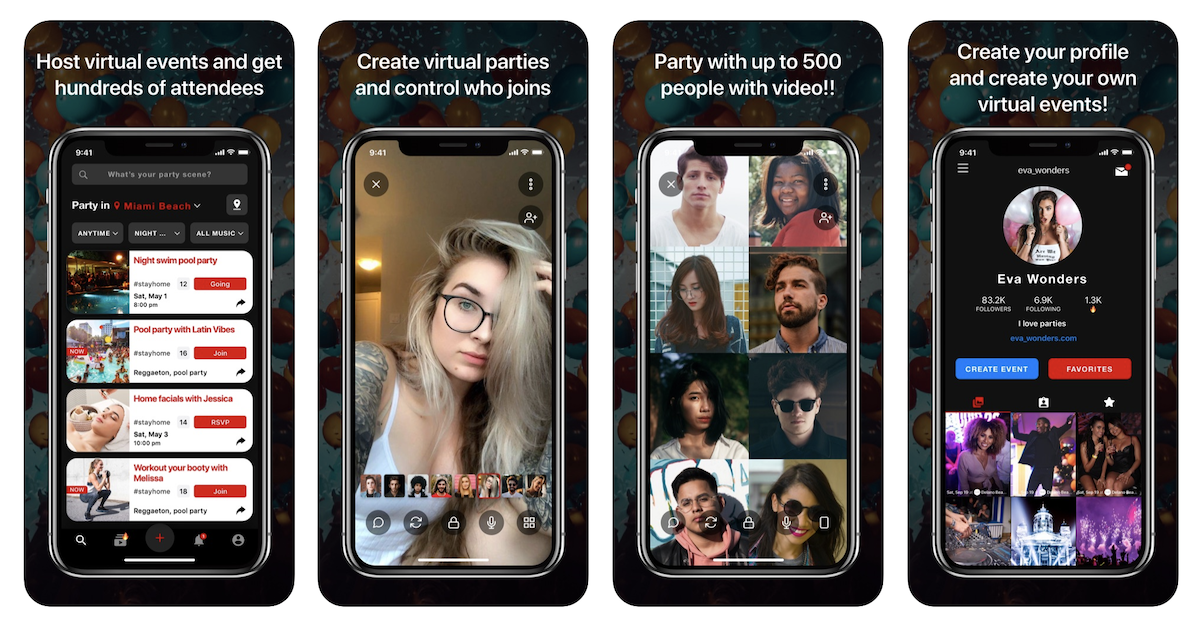How this social media app is adapting to quarantine

If you’re shuttered in your home from COVID-19 lockdowns, then social media may be one of your few outlets to interact with people. Despite a recent, pre-COVID, shift of sentiment surrounding the potential drawbacks of the unabated use of social media, people are rediscovering some of their inherent benefits.
Many platforms, from Zoom to TikTok, have adapted to ongoing quarantines with mixes of emerging trends amongst users. Whether it’s clever videos exposing the doldrums of quarantine life on TikTok or simply creating huge groups of happy hour drinking on Zoom, social media has replaced physical interaction almost entirely.
It’s not all sunshine and rainbows, however.
People innately require more socializing than simply watching Snapchat stories and chatting on WhatsApp. Physical interaction is an integral part of our daily lives and isn’t something that can be tossed out the window without consequences for extended periods. And that notion hasn’t been overlooked by some up-and-coming social media apps, some of whom, needed to get creative or face marked dropoffs in user adoption.
Live events become virtual events
Before COVID-19, live events were experiencing a golden age. If you lived in a major city, enormous music festivals were gearing up for the Spring and Summer rush, live artists played nightly at venues around the city, and social media apps were undergoing a gradual immersion with physical events.
That’s exactly where Fiesta App made its name.
Originally based in Miami, Fiesta is regarded as a fusion of TikTok, Zoom and Eventbrite that enables users to post live videos, pictures, comments, and other information about various events throughout a city. It was particularly popular among Millennials and Gen Z looking for nightlife recommendations, trends, and other interactions — quickly gaining traction as one of the Apple App Store’s most prominent new social media apps.
READ MORE: TikTok bots have also popped up during this time, according to TokUpgrade.
Fiesta represents the hybrid dynamic between purely digital social media (e.g., Twitter) and live events, which was crystallizing as the inevitable future of social media. But COVID-19 put the brakes on that vision for the time being, and so Fiesta had to adapt. And the method that it has adapted is intriguing for several reasons.
Fiesta tinkered with the idea of bringing live events to the virtual world. Some of the pleasure of physical interaction is naturally missing, but the concept is promising.

“Social media was broken,” says Bernardo de la Vega, Founder of Fiesta. “Video chats are great, but COVID-19 revealed some major holes in social media once everyone began relying on it for all their socializing.”
Fiesta subsequently ported its live events feature to the digital realm, enabling users to do everything from throwing virtual thematic parties to scheduling DJ events with celebrities and local artists with their followers. The virtual event app has become all-encompassing, moving beyond two-way and group videos and into the type of group events, whether professional or social, that people are sorely missing right now.
READ MORE: You can also get TikTok followers using this guide.
For example, users can participate in digital cooking sessions, hairstyle tutorials, workout classes, parties with RSVPs, and webinars for professional endeavors. Importantly, users can seamlessly transition from one event to another without the hassle of dialing conference numbers and setting up large Zoom calls. You can participate in a workout class before breakfast and be part of a DJ party at night with ease.
Naturally, Fiesta would enjoy a return to its original format where live events were not closed for the foreseeable future, but the silver lining may be that the new virtual features can serve as an appealing complement to its initial value proposition. If someone in Italy wants to watch their favorite DJ perform in Miami but can’t catch a flight in time, they can tune into Fiesta and view remotely. At the same time, Fiesta users in Miami can rely on its proven and popular original design of sharing videos, images, and chatting about the event in real-time to fellow party-goers in Miami.
Ironically, COVID-19 may have also induced another major change in the social media landscape, but with the lens focused on employees this time.
New company molds
Working from home (WFH) is even becoming the new standard.
Recently, Jack Dorsey announced that Twitter employees could work from home “forever.” Dorsey, who is regarded as a pioneer in many tech circles for endeavors outside of Twitter, may have sparked a trend of tech companies decentralizing out of San Francisco, and becoming hybrid WFH and geo-diverse organizations.
That means no more onerous terms for employment requiring costly moves on behalf of the employees, opening up social media companies to a broader range of influence in various regions. For example, social media companies can become more globally diverse, introducing their appeal and features to new subsets of populations — whether it be in Europe, South America, or somewhere else.
Long has the Bay area had a stranglehold on the tech sector, and in particular, social media. But Fiesta is already an example of a popular app spinning up out of local demand for a hybrid fusion of live events and classical social media. Eventually, various forms of the original Fiesta in Miami may pop up in cities around the world, all with their unique twist of culture and features.
But the onset of virtual events as a complement to the initial idea of Fiesta should remain intact — beyond the end of COVID-19 lockdowns. Social media companies may, consequently, become more than just companies, and immerse themselves into hybrid communities of users, influencers, and WFH employees that pop up where there is demand.
That’s an attractive silver lining to COVID-19, and is another unexpected innovation that has arisen out of necessity more than anything.